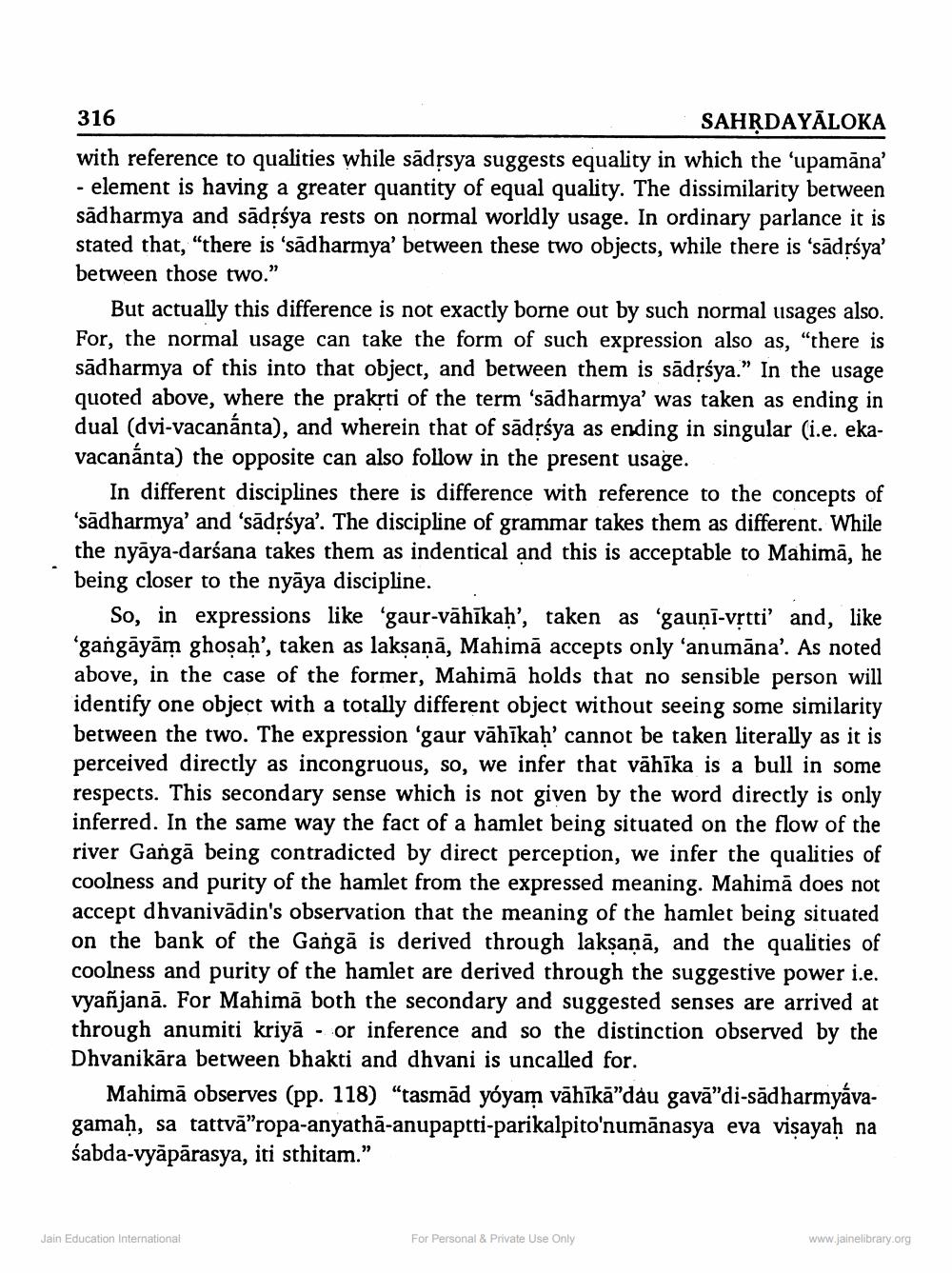________________
316
SAHRDAYĀLOKA with reference to qualities while sādrsya suggests equality in which the 'upamāna' - element is having a greater quantity of equal quality. The dissimilarity betu sādharmya and sādrśya rests on normal worldly usage. In ordinary parlance it is stated that, “there is 'sādharmya' between these two objects, while there is ‘sādrśya' between those two."
But actually this difference is not exactly borne out by such normal usages also. For, the normal usage can take the form of such expression also as, “there is sādharmya of this into that object, and between them is sādrśya.” In the usage quoted above, where the prakrti of the term 'sādharmya' was taken as ending in dual (dvi-vacanánta), and wherein that of sādrśya as ending in singular (i.e. ekavacanánta) the opposite can also follow in the present usage.
In different disciplines there is difference with reference to the concepts of 'sādharmya' and 'sādrsya'. The discipline of grammar takes them as different. While the nyāya-darśana takes them as indentical and this is acceptable to Mahimā, he being closer to the nyāya discipline.
So, in expressions like 'gaur-vāhīkah', taken as 'gauņi-vștti' and, like 'gangāyām ghoṣaḥ', taken as laksaņā, Mahimā accepts only ‘anumāna'. As noted above, in the case of the former, Mahimā holds that no sensible person will identify one object with a totally different object without seeing some similarity between the two. The expression 'gaur vāhīkah' cannot be taken literally as it is perceived directly as incongruous, so, we infer that vāhīka is a bull in some respects. This secondary sense which is not given by the word directly is only inferred. In the same way the fact of a hamlet being situated on the flow of the river Gangā being contradicted by direct perception, we infer the qualities of coolness and purity of the hamlet from the expressed meaning. Mahimā does not accept dhvanivādin's observation that the meaning of the hamlet being situated on the bank of the Gangā is derived through lakṣaṇā, and the qualities of coolness and purity of the hamlet are derived through the suggestive power i.e. vyañjanā. For Mahimā both the secondary and suggested senses are arrived at through anumiti kriyā - or inference and so the distinction observed by the Dhvanikāra between bhakti and dhvani is uncalled for.
Mahimā observes (pp. 118) "tasmād yoyam vāhīkā”dau gavā"di-sādharmyávagamaḥ, sa tattvā”ropa-anyathā-anupaptti-parikalpito'numānasya eva visayaḥ na śabda-vyāpārasya, iti sthitam.”
Jain Education International
For Personal & Private Use Only
www.jainelibrary.org




